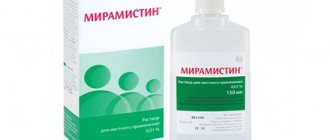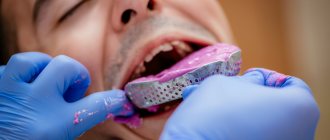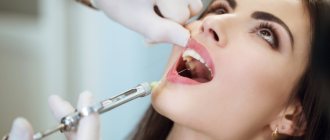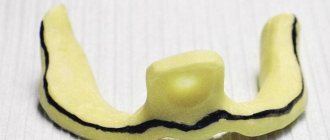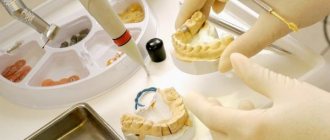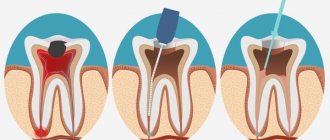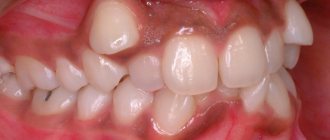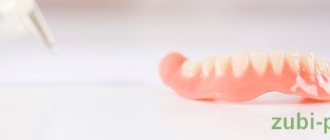4409
Dental treatment is not always painless. It is for this reason that in modern dentistry various types of anesthesia are often used - both local anesthesia and general anesthesia.
However, many patients, both children and adults, experience severe fear and anxiety before undergoing treatment. Anesthetics for the most part cannot solve this problem. This was the reason for the use of premedication.
What is it and why is it needed?
Premedication is the preparation of the body for treatment and anesthesia.
. It is carried out both in pediatric and adult dentistry, using various medications or combinations thereof. Why is such a procedure required if pain relief will still be used later?
The fact is that local anesthetics, which are most often used for various dental interventions, cannot affect all components of pain. With their help, only the pain itself is eliminated. But vegetative and emotional components cannot be eliminated with the help of such drugs.
But the psychological state of the patient is very important in pain relief.
. Even the choice of drugs and dosage may depend on this.
The patient may often have inappropriate reactions to the treatment itself or the anticipation of it. This is not only anxiety and apprehension, but also severe fear, sleep disturbances and loss of appetite.
However, this is not only a psychological moment. In this state, physical indicators also change, and shifts in the operation of some systems may occur. For example, the secretion of glucocorticoids by the adrenal glands increases.
As a consequence of this, blood pressure and temperature rise, and hemodynamic changes are observed.
This is precisely what determines the use of premedication. Actually, its goal is to create conditions under which adequate anesthesia can be used, as well as to prevent complications and create psychological comfort for the patient himself.
Tasks
In addition to the main goal, there are also several diverse tasks that this procedure can solve.
- Reduction and elimination of psycho-emotional arousal.
- Prevention of vagal reactions (severe slowing of heart rate) and stress.
- Neurovegetative stabilization.
- Reducing the patient's reaction to various external stimuli.
- Prevention of allergies.
- Slowing down metabolic processes.
- Strengthening the effect of anesthetics, as well as their longer action.
Premedication in pediatric dentistry
Premedication in dentistry for children is most often used to relieve fear and stress. Not every child is easy to persuade to go to the dentist, since a visit to him is most often associated with pain.
It also happens that small children of preschool and primary school age do not always realize what will happen in the dental office, so they need dental treatment with premedication in orthopedic dentistry. This allows the child to have a positive experience with the doctor.
We also recommend reading: Table No. 8
Tablet forms of drugs are mainly used as premedication drugs in pediatric dentistry. When prescribing, you need to choose drugs that are harmless to the child; their effects and contraindications are indicated in the instructions or annotation to it. Most often, children are prescribed bromides and homeopathic substances; Diphenhydramine and Pipolfen are used as antihistamines and antiallergic drugs.
Indications
In addition to the problems that premedication solves, indications for its implementation can be identified. This procedure is prescribed by the attending physician, based on many factors.
.
This decision is also influenced by the appearance of symptoms that may in no way be related to the nature and complexity of the future intervention.
- Premedication is mandatory before complex or lengthy operations (for example, bone grafting, complex surgery), which involve the use of general anesthesia.
- Carrying out implantation, that is, implanting metal rods into the bone to replace the roots of missing teeth.
- Fear, severe anxiety, tension in the patient.
- Changes in some physical indicators, vegetative changes. This could be, for example, an acceleration of heart rate, increased blood pressure, etc.
- Anxiety in special patients with respiratory or cardiovascular disease, as it can cause serious complications.
- Fainting during the process of collecting information and taking an anamnesis.
Premedication in children
A feature of childhood is the presence of anxiety in the patient and his parents. Taking into account the patient’s age, body weight, medication intake, medical history, it is necessary to eliminate fear, achieve adequate analgesia, amnesia, prevent aspiration, reduce airway secretion, and block autonomic (vegetative) reflexes. Most children are admitted without venous access, so most premedications are provided by alternative methods. The oral route is usually well tolerated, but the rectal route is widely used in many clinics. Intranasal administration of drugs is less tolerated. Intramuscular injections are painful, but can be used in uncontacted patients.
Contraindications
There is no universal list of contraindications for premedication. The fact is that it depends solely on which drugs will be used.
For example, drugs of the benzodiazepine group are contraindicated for pregnant women, mothers during breastfeeding, children under 14 years of age, patients with glaucoma and myasthenia gravis.
In fact, the only universal contraindication is the patient’s allergic reaction to the drug used.
. To avoid allergies, it is necessary not only to interview the patient himself or his relatives, but also to conduct mandatory research on this matter.
Video
Authors):
A.N. Maltseva, anesthesiologist-resuscitator
Organization(s):
Veterinary clinic "Bely Klyk", Moscow
Magazine:
No. 6 - 2016
Abstract
The article discusses the purposes of premedication, combinations of drugs to achieve a sufficient depth of sedation, rules of antibiotic prophylaxis, the need to use cholinergic drugs before anesthesia.
Summary
In this article we discuss the goals of preanesthetic premedication, which combination of drugs should we use for better quality of sedation, rules of antimicrobal prophylaxis in surgery and perioperative usage of cholinergic drugs.
Keywords
Premedication, sedation, alpha 2 agonists, antibiotic prophylaxis, atropine
Key words
Premedication, sedation, alfa2 agonists, antimicrobal prophylaxis, atropine
Abbreviations
: NSAIDs - non-steroidal anti-inflammatory drugs
When giving premedication, the doctor can pursue several goals:
· sedation, reducing anxiety, facilitating preparation for surgery;
· pain reduction;
prevention of infection;
· prevention of nausea and reflux-esophagitis;
· use of drugs “to prevent complications”: allergies, cardiac arrest, etc.: anticholinergic drugs, steroids, antihistamines, antioxidants.
Let's take a closer look at each of these points.
Sedation, reducing anxiety, facilitating preparation for surgery. Pain reduction
The main practical significance of using sedatives in premedication is the convenience of working with the patient. During planned operations, an intramuscular injection of a drug that causes sedation provides the patient with sufficient sleep to install an intravenous catheter and prepare the surgical field.
However, sedation is also beneficial for the patient. There is evidence in humane medicine [1] that preoperative stress can increase postoperative pain. In addition, due to stress, an exacerbation of some concomitant diseases may occur (for example, the development of respiratory failure in dogs with brachycephalic syndrome, tracheal collapse).
The use of certain premedications (eg, opioids) may reduce intraoperative anesthetic requirements and postoperative pain.
Drugs that can be used for sedation and analgesia.
Acepromazine
Belongs to the group of phenothiazine derivatives. The sedative effect is dose dependent. In low doses, it causes superficial sedation, sufficient for sleep in a cage, but often insufficient for unpleasant manipulations. Acepromazine does not have an analgesic effect. In addition, there is evidence that acepromazine does not relieve anxiety; the patient may hear loud sounds [2]. In this regard, it is not recommended for the treatment of noise phobias or for sedation for unpleasant painful procedures. Perhaps its main use is sedation of patients in the preoperative period, when the animal is too nervous in a cage awaiting surgery. It can also be used for sedation in the postoperative period, when awakening from anesthesia is accompanied by vocalization and agitation (usually after dissociative anesthetics). Acepromazine may make waking up smoother. The positive properties of the drug include reducing nausea.
One of the main side effects of acepromazine is vasodilation, which can lead to a decrease in blood pressure. For this reason, it should not be used in unstable patients with hemodynamic compromise or a high risk of hemodynamic compromise. Due to the high risk of side effects, it should not be used in cubs under 12 weeks of age.
There is information that acepromazine should not be used by boxers. It is based on case reports of severe side effects following the use of acepromazine in this breed of dog. There is no more definitive data (for example, studies on a group of boxers) about this. There may be no reason to avoid acepromazine in Boxers altogether, but use it with great caution in these animals.
Another group of patients in whom the use of acepromazine should be very limited are animals with severe liver disease. For example, in a patient with a portosystemic shunt, it is better not to use acepromazine at all or to use doses several times lower than recommended.
It was generally accepted that acepromazine should not be used in animals with a history of seizures. However, this was not confirmed in the study [3], therefore, if necessary, such patients can be sedated with acepromazine. It should not be forgotten that acepromazine is not an anticonvulsant and is not used to relieve seizures.
The doses of acepromazine required for sedation are much less than those typically recommended by the manufacturers: 0.005 – 0.1 mg/kg. The drug is effective both when administered intramuscularly and when the injection solution is administered orally.
Alpha2 agonists
More selective alpha2-agonists, such as medetomedine and dexmedetomedine, are now preferred because they have a lower risk of side effects.
Alpha2-agonists have a good sedative effect, in addition, medetomidine and dexmedetomidine also have an analgesic effect. However, for severe pain syndrome, using them alone may not be enough.
In some cases, sedation may not be achieved with standard doses of alpha2-agonists. This usually occurs in frightened, aggressive animals. And this is explained by the fact that a large amount of endogenous catecholamines against the background of stress prevents alpha2 agonists from effectively interacting with alpha receptors. In such cases, it is safer not to increase the dose of the alpha2-agonist above the recommended dose, but to use them in combination with other drugs. The best combination is a combination of an alpha2-agonist with opioids, since they have a synergistic effect [4]. This allows you to achieve a better analgesic and sedative effect when using lower doses. If opioids are not available, alpha2-agonists can be combined with dissociative anesthetics. For example, standard doses of medetomidine may keep an aggressive cat awake, but when combined with zoletil 1 mg/kg IM, good sedation can be obtained without the risk of increasing the risk of alpha2-agonist side effects. The combination of ketamine with alpha2-agonists occurs in many protocols, and the combination of tiletamine, zolazepam and medetomidine or dexmedetomidine is not standard common practice in small animal anesthesiology in the United States and Europe. This is because all anesthesia veterinarians have access to opioids and ketamine, so tiletamine is used much less frequently. However, there are many studies on the effectiveness of this combination (tiletamine + zolazepam with medetomidine or dexmedetomidine) both in wild animals and in our ordinary patients [5,6,7,8]. This gives us the right to use it too.
At the onset of action of alpha2-agonists, vasoconstriction of peripheral vessels occurs, an increase in blood pressure and compensatory bradycardia. Despite the possible increase in blood pressure, the use of dexmedetomidine in people with arterial hypertension did not cause hemodynamic disturbances [20]. In some cases, when using high doses, hypotension may occur. In this regard, in unstable patients or patients with hemodynamic compromise, the use of alpha2-agonists should be avoided or lower doses should be used.
Another possible side effect is vomiting. In this regard, after premedication with alpha2-agonists, the animal should not be left unattended. If vomiting occurs in a patient who is no longer clearly conscious, he or she may aspirate the vomit with subsequent development of aspiration pneumonia and respiratory failure.
Alpha2-agonists have an antidote - atipamezole, which will quickly reverse the effect of these drugs. It is worth remembering that sometimes atipamezole is metabolized faster than the alpha2-agonist itself, so after waking up the animal may fall asleep again after some time. Owners should be warned about this effect if the patient goes home. This should also be taken into account if an overdose of an alpha2-agonist has occurred or adverse reactions have occurred. The introduction of atipamezole will correct all this. But there is a risk that symptoms will return after its effect wears off. Therefore, such patients should be monitored for several hours. If necessary, re-administer atipamezole. When repeated administration, the dose is usually reduced because part of the alpha2-agonist has already been metabolized.
Doses of alpha2-agonists for premedication: medetomidine - 5-15 mcg/kg; dexmedetomidine - 2.5-10 mcg/kg IM.
Please note that the doses recommended for use in cats and dogs are often much lower than those recommended by some drug manufacturers. Using unreasonably high doses is dangerous due to the development of side effects.
Benzodiazepines have a good sedative effect, so diazepam or midazolam can also be used as premedication. They have very little effect on hemodynamics, and this is their advantage, however, they do not have an analgesic effect. It is worth remembering that combination drugs tiletamine + zolazepam also contain benzodiazepines. Therefore, their combined use with midazolam or diazepam is not always justified (since, in fact, the patient receives two benzodiazepines at the same time). In any case, it is worth considering reducing the benzodiazepine dose in such cases.
Opioids can be used for sedation in premedication. Butorphanol has the most pronounced sedative effect.
In some cases, antihistamines are used for sedation. For example, promethazine (pipolfen) at a dose of 1 mg/kg. However, its sedative effect is weak and does not occur in all patients. There are no significant side effects with its use, however, routine use in premedication is doubtful due to the fact that there is no data on assessing its effectiveness. However, it can be tried, including in combination with other drugs, when the use of other drugs is limited (for example, in hemodynamically unstable patients).
Premedication is sometimes not perceived as a serious effect on the patient’s body, because it is not anesthesia. But complications can be encountered already at this stage. In this regard, the patient should not be left alone after the administration of sedating drugs; he must be monitored by a doctor or assistant.
In human anesthesiology, information is emerging on the use of gabapentin [11] in premedication to improve postoperative pain control. Perhaps soon we will be able to use another drug in premedication.
Separately, it is worth discussing the use of NSAIDs before anesthesia. This is a common practice because it reduces pain in the postoperative period. For the analgesic effect of NSAIDs to take effect, it takes some time, sometimes more than 2 hours. Thus, when using NSAIDs after a short surgical procedure, there is a risk that the analgesic effect of the anesthetic drugs will already end, and the NSAID will not yet begin to act. In this regard, before planned short operations (for example, ovariohysterectomy), they can be done with premedication. It must be remembered that side effects of NSAIDs (acute kidney damage, gastrointestinal tract) are more likely in those patients who already have impaired perfusion of these organs. Therefore, if hypotension or severe hypothermia occurs during surgery, the risk of developing complications from NSAIDs is higher, even if the drug was administered only once. In cases where it cannot be assured that the surgical procedure will be short-term, with a low likelihood of hypotension and hypothermia, the use of NSAIDs before surgery is not advisable (for example, cats undergoing unilateral mastectomy). In these patients, NSAIDs can be given after awakening and restoration of normal body temperature, and analgesia can be provided before that with other drugs.
Prevention of infection
To reduce the risk of bacterial complications, antibiotic prophylaxis is carried out. Of course, it does not replace the rules of asepsis and antisepsis, since if they are violated, not a single antibiotic can prevent infectious complications.
One of the important requirements for antibiotic prophylaxis is that the concentration of the drug in the blood and tissues should be high at the time of the incision. Therefore, only intravenous (preferably) or intramuscular drugs can be used for this purpose. Subcutaneous drugs are absorbed slowly; it is impossible to predict the rate of their entry into the blood and tissues. Therefore, they are not suitable for antibiotic prophylaxis in surgical animals.
Antibiotic prophylaxis can be planned - when the drug is administered once before surgery. In this case, the main purpose of such an antibiotic is to destroy bacteria that can get from the patient’s skin. 1st generation cephalosporins (for example, cefazolin 25 mg/kg) are well suited for this purpose. The use of 3rd generation cephalosporins (for example, ceftriaxone) or fluoroquinolones for antibiotic prophylaxis is unjustified and contributes to the development of antibiotic resistance. However, during operations on the gastrointestinal tract, antibiotic prophylaxis may be more extensive (for example, cefazolin + metronidazole; amoxicillin with clavulanic acid or 3rd generation cephalosporins). For elective surgeries, there is no need to continue using antibiotics in the postoperative period. Currently, it is not recommended to use antibiotics even after gastrointestinal surgery unless the patient had intestinal perforation and septic peritonitis at the time of surgery. If the rules of asepsis are observed, antibiotics are also not required after osteosynthesis of closed fractures, laminectomies, etc.[9]. And if it is very difficult for doctors to come to terms with this, then such planned operations as hysterovarioectomies, removal of skin tumors, and mastectomies should definitely not be accompanied by taking antibiotics.
In cases where the patient already has a bacterial infection (eg, pyometra), the choice of antibiotic will depend on which drug is needed to treat the primary disease.
Antibiotic prophylaxis is not always necessary. There is no need to use antibiotics for short interventions in healthy animals (for example, during castration). Compliance with standard aseptic rules will be enough to ensure that the patient does not have any complications.
Prevention of nausea and reflux esophagitis
Vomiting is one of the side effects of anesthesia drugs. This is an undesirable side effect; it is not only unpleasant for the patient, but also increases the risk of aspiration and can slow down the recovery of independent appetite.
The use of metoclopramide as premedication to reduce the risk of nausea is questionable and is not generally recommended in standard protocols.
Currently, maropitant (serenia) is becoming increasingly popular among our foreign colleagues to combat perioperative nausea. Since it is possible that maropitant may also have an analgesic effect and reduce the intraoperative need for anesthetics [10,12], this makes its use even more attractive. However, widespread use in premedication is often limited by the price of this drug.
Reflux esophagitis after anesthesia may occur more often than is generally believed [13,14]. This occurs due to a decrease in the tone of the gastroesophageal sphincter during anesthesia, and the reflux of acidic stomach contents into the esophagus. In some cases, reflux esophagitis leads to esophageal stricture. At the moment, there is no clear evidence about the need to use gastroprotectors or prokinetics to reduce the risk of reflux esophagitis. It is believed that one of the main predisposing factors for its development is prolonged fasting before anesthesia. Related to this are recommendations to stop access to food no more than 8-10 hours before anesthesia, access to water 2 hours before anesthesia. An anesthesiologist should consider the use of gastroprotectors in premedication to reduce the risk of reflux esophagitis in patients with a history of vomiting and fasting for more than 12 hours. At the moment there is no data on the optimal choice of drug; famotidine seems to be the most convenient for this purpose, since it should reduce the secretion of gastric juice faster than proton pump blockers and more effectively than ranitidine. Maropitant does not reduce the risk of reflux esophagitis.
The use of drugs “to prevent complications”
Anticholinergics
One of the most popular drugs used in premedication is atropine. It has been used for many years to reduce the secretion of the bronchial and salivary glands and prevent bradycardia. However, it is currently no longer part of the standard anesthesia protocol. This is due to the fact that, according to currently available data, atropine does not affect the incidence of complications, but can cause side effects (excessive dryness of the mucous membranes and respiratory tract, decreased peristalsis, tachycardia) [15-22]. The standard use of atropine in combination with alpha2-agonists has also failed. Bradycardia during the use of alpha2-agonists is a normal physiological response of the body to vasoconstriction, an increase in total peripheral vascular resistance and blood pressure. The use of atropine as premedication in combination with alpha 2 agonists, instead of prophylaxis, can only increase the risk of arrhythmias [21]. Currently, the use of atropine in maxillofacial surgery [19] and during bronchoscopy [16] is also controversial. This does not mean that atropine should be forgotten. But it no longer has a place in routine premedication; it should be used as a resuscitation drug to correct sinus bradycardia, which causes hemodynamic disturbances (when there is also a decrease in blood pressure against the background of bradycardia).
Steroids and antihistamines
Routine use of steroids for premedication is not justified in most cases. They cannot prevent hemodynamic disorders (since they are usually associated with either hypovolemia or vasodilation due to anesthesia drugs, in the first case this will be corrected by infusion therapy and blood transfusion, in the second by vasopressors), they do not prevent edema and any other complications . At the same time, due to their side effects on the gastrointestinal tract, immunosuppression, hyperglycemia can worsen the condition of animals after surgery. There is human evidence for the use of low dose dexamethasone (0.05-0.1 mg/kg) to reduce postoperative nausea and pruritus caused by intrathecal opioids as an analgesic component. However, even so, steroids are not currently included in standard premedication protocols. There is no animal data on the possible effectiveness of steroids in reducing intraoperative and postoperative complications. None of the modern anesthesia guidelines recommend the use of steroids in premedication [26-29]. The exception is usually when the patient has a primary disease that requires steroid therapy.
The idea of using steroids and antihistamines to prevent “anesthesia allergies” is also very questionable. In animals, there is very little data on allergic reactions to anesthetic drugs (frequency of such reactions, most common causes). In humans, this issue has been well studied: the most common causes of allergic reactions are muscle relaxants, antibiotics and latex. To prevent allergic reactions in people, special tests are used to identify a possible allergen in order to protect the patient from it. This is the only effective prevention. Steroids and antihistamines are not a way to prevent allergic reactions during anesthesia [23-25].
Antioxidants
The idea of finding a drug that will prevent damage to organs and tissues due to hypoxia and impaired perfusion is very attractive. And pharmaceutical companies use this very widely. Unfortunately, at the moment there is not a single proven effective drug that could reduce the risks of anesthesia or facilitate recovery after it. The best antioxidants are normal blood pressure, oxygenation and ventilation. There is currently no antioxidant that is recommended by reputable anesthesia societies for use before, during, or after anesthesia.
Thus, standard premedication will consist of sedatives and antibiotics. In some cases, NSAIDs, maropitant, and gastroprotectors may be added. Polypharmacy is not encouraged anywhere, including in anesthesiology. When administering this or that drug, the doctor must be sure that his patient needs it and understand for what specific purpose it is being used, since there are no “preventive” drugs that should be used to reduce abstract “risks”. In some cases, there may not be premedication in the usual sense of the word. For example, if a patient presents in critical condition for emergency surgery, he or she may be immediately induced with an intravenous anesthetic drug, as this will be faster and safer than intramuscular sedation. But this is a separate topic, which, I hope, we will cover in future issues of the magazine.
Literature:
1. Preoperative anxiety, postoperative pain, and behavioral recovery in young children undergoing surgery. Kain ZN1, Mayes LC, Caldwell-Andrews AA, Karas DE, McClain BC, Pediatrics. 2006 Aug;118(2):651-8.
2. Canine Anxieties and Phobias: An Update on Separation Anxiety and Noise Aversions Barbara L. Sherman, PhD, DVM, Daniel S. Mills, BVSc, PhD, CBiol, MIBiol, CCAB, MRCVS, Veterinary Clinics of North America: Small Animal Practice , Volume 38, Issue 5, September 2008, Pages 1081–1106.
3. The Use of Acepromazine in Dogs with a History of Seizures. Jl Garner, R Kirby, E Rudloff, Jveec, September, 2004.
4. Analgesic synergy between opioid and α2 -adrenoceptors. Chabot-Doré AJ, Schuster DJ, Stone LS, Wilcox GL. Br J Pharmacol. 2015 Jan;172(2):388-402.
5. Evaluation of dexmedetomidine, tiletamine, and zolazepam for the immobilization of black bears Authors Jessica A. Coltrane, Sean Farley, David Saalfeld, David Battle, Tony Carnahan, Justin Teisberg, Wild Life Society Bulletin, Volume 39, Issue 2, June 2015 Pages 378–382.
6. Immobilization of grizzly bears (Ursus arctos) with dexmedetomidine, tiletamine, and zolazepam Teisberg JE1, Farley SD, Nelson OL, Hilderbrand GV, Madel MJ, Owen PA, Erlenbach JA, Robbins CT., J Wildl Dis. 2014 Jan;50(1):74-83.
7. Effect of Dexmedetomidine Hydrochloride on Tiletamine Hydrochloride-Zolazepam Hydrochloride Anesthesia in Alpacas R Seddighi et al. Am J Vet Res 77(10), 1057-1063. 10 2020.
8. Comparison on the Effect of Tiletamine-Zolazepam and Tramadol Combined with Dexmedetomidine or Xylazine in Cats Undergoing Ovariohysterectomy A. Chanthawan*, S. Durongphongtorn, Proc. 9th C.U. Vet. Sci. Ann. Con., 2010.
9. Clinical practice guidelines for antimicrobial prophylaxis in Surgery
Dale W. Bratzler, E. Patchen Dellinger, Keith M. Olsen, Trish M. Perl, Paul G. Auwaerter, Maureen K. Bolon, Douglas N. Fish, Lena M. Napolitano, Robert G. Sawyer, Douglas Slain, James P Steinberg and Robert A. Weinstein.
American Journal of Health-System Pharmacy February 2013, 70 (3) 195-283
10. Effect of maropitant, a neurokinin-1 receptor antagonist, on the minimum alveolar concentration of sevoflurane during stimulation of the ovarian ligament in cats. Niyom S, Boscan P, Twedt DC, Monnet E, Eickhoff JC Vet Anaesth Analg. 2013 Jul;40(4).
11. Comparative evaluation of Gabapentin and Clonidine for Premedication on postoperative analgesia in a patient undergoing modified radical mastectomy under general anesthesia. Nita Gosai, Leena Patel, Darshan Patel, Ravi Umarania, Bipin Patelb Asian Pac. J. Health Sci., 2020.
12. Cerenia Prevents Perioperative Nausea and Vomiting and Improves Recovery in Dogs Undergoing Routine Surgery. Deborah Ramsey Tim Fleck Thomas Berg Steve Nederveld Donald DeLong Jezaniah-Kira Tena Michelle Aleo Robert McCall; Vol. 12, No.3, 2014 Intern J Appl Res Vet Med.
13. Post-anesthetic esophageal dysfunction in a dog Epstein, A. and Swirsky, Israel Journal Of Veterinary Medicine, Volume 64 (1) 2009.
14. Postanesthetic esophageal dysfunction in 13 dogs. Wilson D.V., Walshaw R.J Am Anim Hosp Assoc. 2004 Nov-Dec;40(6).
15. Myth: Atropine should be administered before succinylcholine for neonatal and pediatric intubation, Bethany Fleming, Maureen McCollough and Sean O. Henderson, Canadian J Emergency Medicine, Volume 7, Issue 2 March 2005, pp. 114-117.
16. A prospective study of atropine premedication in flexible bronchoscopy. RD Hewer, PM Jones, PS Thomas, DK Mckenzie, Internal Medicine Journal, Volume 30, Issue 4 August 2000.
17. Anticholinergic premedication to prevent bradycardia in combined spinal anesthesia and dexmedetomidine sedation: a randomized, double-blind, placebo-controlled study. Eun Jin Ahn, PhD, MD, Jun Ha Park, Hyo Jin Kim, MD, Kyung Woo Kim, MD, Hey Ran Choi, PhD, MD Pr, Si Ra Bang, PhD, MD, Journal of Clinical Anesthesia Volume 35, December 2020 , Pages 13–19.
18. An International Delphi Survey on the use of Atropine for Critical Care Intubation Peter Jones, Rym Boulkedid, Stéphane Dauger, Niranjan Kissoon, Joe Carcillo, Corinne Alberti, Mark J. Peters, Vol 13, Issue 2, 2012.
19. A national survey of atropine use by Australian Anaesthetists. Parnis SJ, Van der Walt JH. Anaesth Intensive Care. 1994 Feb;22(1).
20. Does premedication with dexmedetomidine provide perioperative hemodynamic stability in hypertensive patients Gulbin SezenYavuz Demiraran, Ilknur Suidiye Seker, Ibrahim Karagoz, Abdulkadir Iskender, Handan Ankarali, Ozlem Ersoy and Onur Ozlu BMC Anesthesiology 2014.
21. Evaluation of the sedative and cardiovascular effects of intramuscular administration of dexmedetomidine with and without concurrent atropine administration in dogs Congdon JM, Marquez M, Niyom, Boscan. J Am Vet Med Assoc. 2011 Jul 1.
22. Analgesia, Anesthesia, and Chemical Restraint in the Emergent Small Animal Patient, Jane Quandt, DACVAA, DVM, MS Vet Clin Small Anim 43 (2013) 941–953.
23. Allergic Reactions in the Perioperative Period in Children, Victor Gonzalez-Uribe1,2, Elsy Maureen Navarrete-Rodriguez, Juan José Sienra-Monge and Blanca Estela Del Rio-Navarro, J Allergy Ther 2016, 7:4.
24. Perioperative Anaphylaxis, Violeta Régnier Galvão & Pedro Giavina-Bianchi & Mariana Castell, Curr Allergy Asthma Rep (2014) 14: 452.
25. Hypersensitivity reactions in the anesthesia setting/allergic reactions to anesthetics. Mertes PM, Demoly P, Malinovsky JM, Curr Opin Allergy Clin Immunol. 2012 Aug;12(4):361-8.
26. BSAVA, 2ed Manual of Canine and Feline Anesthesia and Analgesia
27. AAHA Anesthesia Guidelines for Dogs and Cats Richard Bednarski, MS, DVM, DACVA (Chair), Kurt Grimm, DVM, MS, PhD, DACVA, DACVCP, Ralph Harvey, DVM, MS, DACVA, Victoria M. Lukasik, DVM, DACVA, W. Sean Penn, DVM, DABVP (Canine/Feline), Brett Sargent, DVM, DABVP (Canine/Feline), Kim Spelts, CVT, VTS, CCRP (Anesthesia), (J Am Anim Hosp Assoc 2011;47: 377–385.
28. Veterinary anaesthesia, A. Dugdale, Willey-Blackwell, 2010.
29. L&J Veterinary Anesthesia and Analgesia, 4th ed., Blackwell, 2007.
Back to section
Restrictions
We can talk in more detail about the restrictions that are necessary before and after premedication and anesthesia. There's quite a big list here.
- During the day before the procedure, you should not drink alcoholic beverages or any sedatives.
- Pregnant women should not be given drug premedication.
- If the patient has any contraindications to the selected drugs, they should be replaced.
- During such procedures, the child must have an adult nearby. Most often these are parents, since then the child must be at home under the supervision of elders throughout the day.
- After administering the drugs for some time, patients should not drive vehicles, operate complex machinery or engage in work that requires strong mental stress and increased attention, since reaction and attention are reduced.
- Climbing stairs and walking on the streets alone, as well as playing sports immediately after the procedure, is not advisable.
- You should not engage in work that requires high responsibility immediately after premedication, such as looking after children.
- For the rest of the day, you should not make important decisions or deal with complex issues, such as money or legal issues.
Let's find out how dental granuloma is treated in dentistry.
How to prevent hyperesthesia - read our recommendations.
Here: https://www.vash-dentist.ru/lechenie/zubyi/perechen-prichin-razrusheniya.html - the causes of tooth decay are listed.
Anesthetics without adrenaline
This group of anesthetics includes Scandonest and Mepivastezin (Mepivacaine). They have a moderate vasodilator effect, so they are used without a vasoconstrictor.
After administration of the drug, anesthesia occurs quickly (3–5 minutes), the effect lasts 3–40 minutes for pulp anesthesia, and up to 3 hours for soft tissue anesthesia.
It is used for all types of manipulations, as well as during maxillofacial operations. Indicated for children weighing at least 15 kg.
Scandonest has the following side effects:
- headaches, dizziness;
- change in heart rate;
- allergic reactions;
- hypotension;
- disturbances in the gastrointestinal tract.
For patients with a complicated medical history, the elderly, pregnant and lactating women, the drug is prescribed with caution, as it penetrates into the blood. It poses less danger during infiltration anesthesia (the drug is injected directly into the site of the intended manipulation).
Ultracaine (Articaine) is used for local and general anesthesia and is considered a leader. It is reliable and is used for pain relief in children, the elderly and pregnant women. There are 3 versions of the drug available:
- Ultracaine D, which does not contain preservatives and epinephrine;
- Ultracaine DS, with epinephrine;
- Ultracaine DS forte, with increased vasoconstrictor content.
Ubistezin is similar to Ultracain in composition and properties. Suitable for patients of all ages, except children under 4 years of age. The effect of the drug appears 1-3 minutes after injection and lasts 45-240 minutes - this depends on the type of anesthesia. The patient's health status dictates the choice of drug form. Both drugs labeled “D” (without adrenaline) are used for the following diseases:
- bronchial asthma;
- tendency to allergies;
- thyroid diseases;
- diabetes;
- hypertension;
- cardiac decompensation.
For high blood pressure, moderate heart disease, and pregnant and nursing mothers, Ubistezin and Ultracain labeled “DS” can be used, since a low concentration of the vasoconstrictor will not cause as much harm as the penetration of the anesthetic into the blood.
We invite you to familiarize yourself with what premedication is and how it is carried out in dentistry
Septanest has only 2 forms, differing in the concentration of adrenaline. The effect occurs within 1–3 minutes and lasts 45 minutes. Used for removing, grinding and filling teeth. But the drug contains preservatives that provoke allergic reactions. Not recommended for pregnant women and children.
Drugs used
Most often, three groups of drugs are used in dental practice, with the help of which the desired effect can be achieved. Among them are sedatives (calming) of plant origin, benzodiazepine drugs and some chemical ones.
In addition, local anesthetics in the form of gels and ointments can be used in dentistry to relieve sensitivity.
According to the observations of doctors, many patients experience fear precisely before the process of injecting an anesthetic. And similar gels are used to ensure painlessness of the injection.
Herbal sedatives
Such remedies include the quite common and well-known valerian, corvalol, motherwort, valocordin
and some others. Their use is practiced before simple dental interventions and almost never causes concern or difficulty.
Usually the appointment is made in the clinic right before the operation, 15 or 20 minutes. The dosage is approximately the same in all cases, only specific drugs matter:
- valerian tincture – about 60 drops;
- valocordin, corvalol, and valoserdin - 30 drops.
- motherwort tincture – 30 drops.
Benzodiazepine tranquilizers
If you choose tranquilizers, take them in advance. In addition, some difficulties may arise.
- Tranquilizers are powerful drugs. They cannot be issued directly at the clinic. Therefore, they should be purchased in advance with a doctor's prescription.
- If the patient’s profession requires working with machinery or requires quick reactions, then the operation is under no circumstances performed before work.
- Tranquilizers should not be prescribed to patients who are being treated with CNS depressants, isoniazid, erythromycin, cimestidine.
- The list of contraindications to this type of premedication includes pregnant and lactating women, as well as those taking oral contraceptives.
Most often, two drugs of this group are used for dental premedication - phenazepam and gidazepam.
- Phenazepam
. The most powerful drug of the group. It has a pronounced anti-anxiety effect, reduces emotional instability, irritability, etc. In addition to standard contraindications, it cannot be used for patients with impaired liver function and myasthenia. - Gidazepam
. This drug is classified as an anxiolytic. Prescribes it in situations where an understandable feeling of fear before an operation transforms into another form, and the fear becomes constant. This drug is more versatile than the similar drug phenazepam, is better tolerated and is used much more often.
Chemicals of other groups
As an example, we can cite trioxazine. However, such means are used in practice much less frequently than those described above.
Trioxazine effectively calms the nervous system
, however, it does not have the effect of muscle relaxation, which is useful in this case, that is, muscle relaxation. After its use, there is a slight decrease in temperature, as well as physical activity.
Synonyms for this drug are trimethosine, sedoxazine, morpholine and tetrahydroxazine
, which use the same active ingredient. An additional advantage is the enhanced effect of sedatives and anesthetics, which is necessary for premedication.
How laser is used for dental treatment - all the details on our website.
This article lists the causes of tartar formation.
Do you have white spots on your teeth? Here: https://www.vash-dentist.ru/lechenie/zubyi/boremsya-s-belyimi-pyatnami.html - let's find out what it could be.
Types of nonspecific premedication
Sedative
Has a sedative effect. Reduces mental and emotional stress, eliminates fear and anxiety, and also enhances the effect of pain relief.
Half an hour to an hour before treatment, the patient is recommended to take tranquilizers or homeopathic sedatives of plant origin:
- The first include afobazole, diazepam, phenazepam, valocordin.
- The second includes tinctures of valerian, motherwort and peony, novopassit tenoten, corvalol.
Under their influence, a person relaxes, while remaining fully conscious. The effect lasts for several hours. If you have a panicky fear of dentists, it is better to take medications not only before visiting the doctor, but also on the eve of the scheduled visit.
Valerian and peony
Analgesic
Completely suppresses or significantly reduces the pain threshold, enhances the result of local anesthesia. The analgesic effect is achieved by taking painkillers - narcotic or non-narcotic. Half an hour to an hour before dental intervention, the following are prescribed: ibuprofen, ketrodol, xefocam-rapid, nubain, tempalgin, tramadol, tramal, fortal.
On average, the effect of analgesics lasts four hours.
Antiallergic
To prevent allergic reactions to local anesthetics and pseudo-allergic manifestations in response to a stressful situation for the body, patients are prescribed antihistamines.
Most often it is diphenhydramine, suprastin, claritin, tavegil. Other drugs are also used - Zyrtec, Kestin, Parlazan, Telfast.
Diphenhydramine, claritin, tavegil and suprastin also have a sedative and anti-inflammatory effect.
Cholinergic
Excessive salivation and the gag reflex are suppressed with a number of medications:
- atropine;
- haloperidol;
- glycopyrronium;
- droperidol.
Clozapine, metacin, Robinul and triftazine are used for the same purposes. Medicines are taken the day before dental procedures and/or half an hour before them.
Combined
In other words – combined. This type is most often used to eliminate several problems at once. Which types of premedication will be combined depends on the results of the anamnesis.
Prices
The cost depends on the choice of specific drug. Tinctures made from herbal preparations will be cheaper. For example, the price of tincture of valerian and motherwort ranges from 20–30 rubles. Corvalol will be more expensive - about 50-100 rubles per bottle.
If more powerful drugs are required - tranquilizers, then the cost of premedication immediately increases. However, in any case, it will be insignificant in comparison with all the drugs and remedies that may be required.
The price of phenazepam varies depending on the pharmacy chain from 90 to 140 rubles. And the average cost of gidazepam is about 100 rubles.
Reviews
Premedication is almost always well tolerated by patients
. After all, the drugs themselves, as well as the method of their use, are selected by experienced doctors, taking into account the patient’s condition and indicators.
Those who have undergone it can share their impressions about this procedure by leaving a comment on this article.
If you find an error, please select a piece of text and press Ctrl+Enter.
Tags adults for children premedication
Did you like the article? stay tuned
Previous article
Teeth whitening strips Crest 3D White Whitestrips: varieties, prices, reviews
Next article
Description of treatment for mandibular fracture
